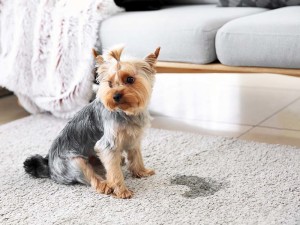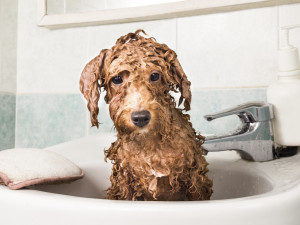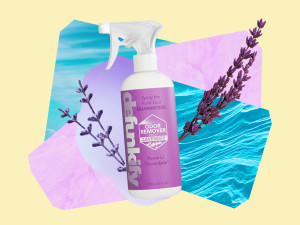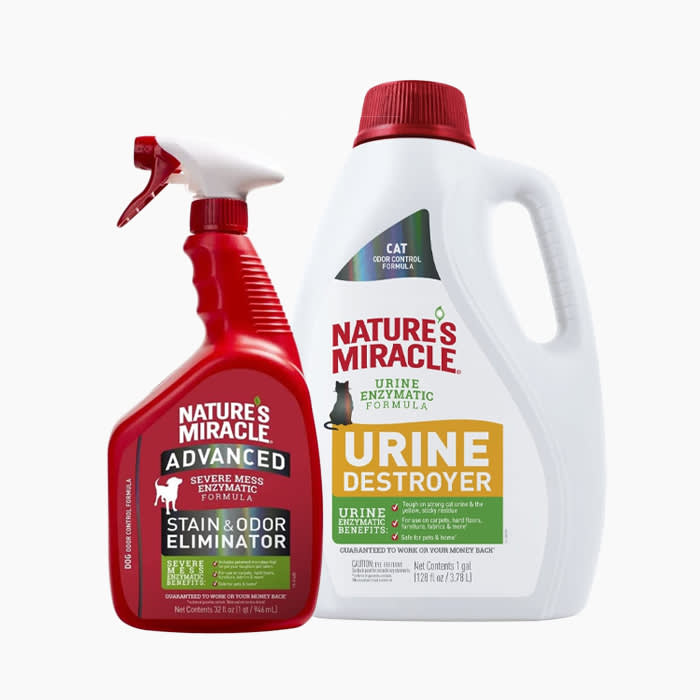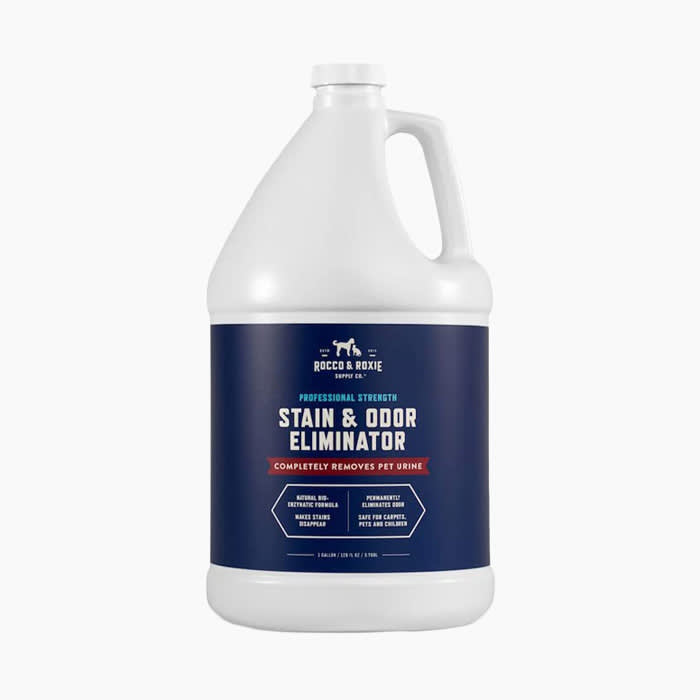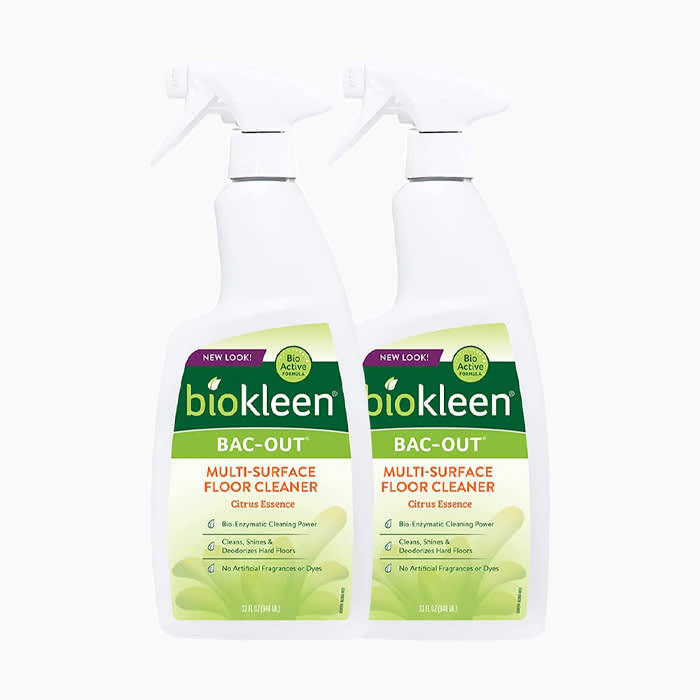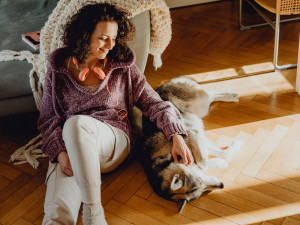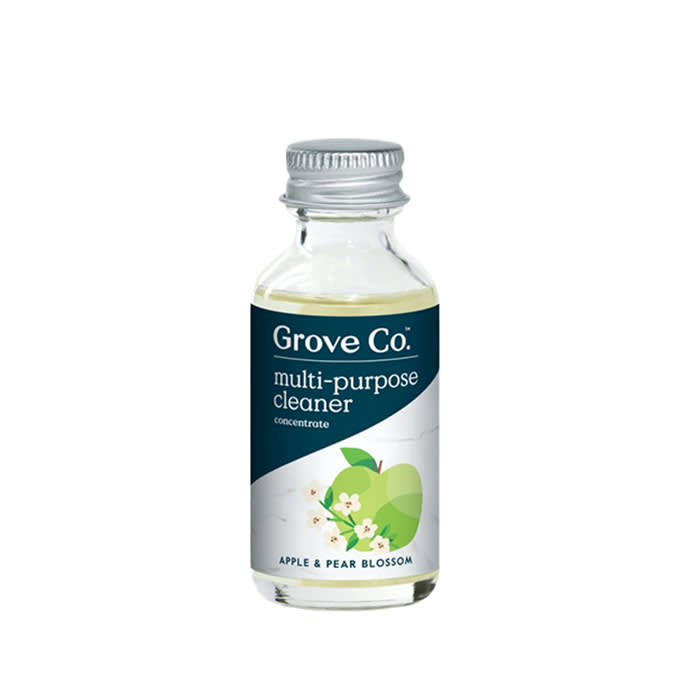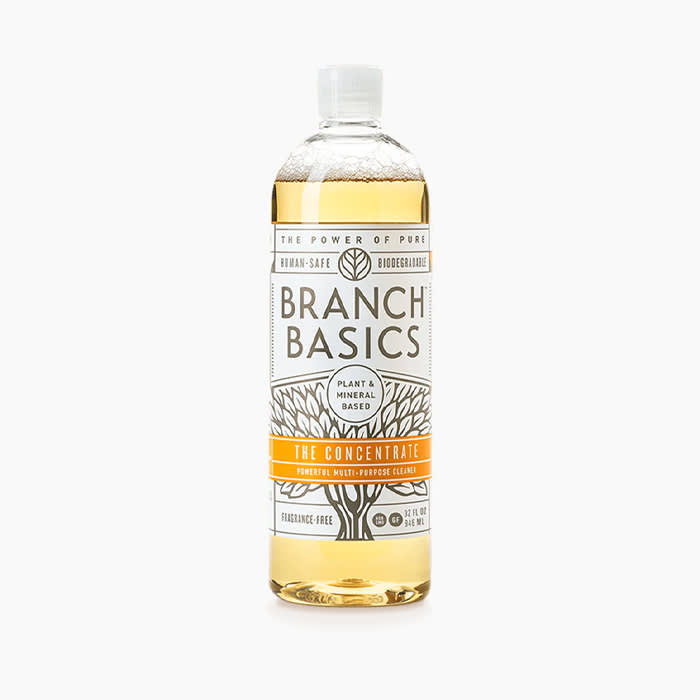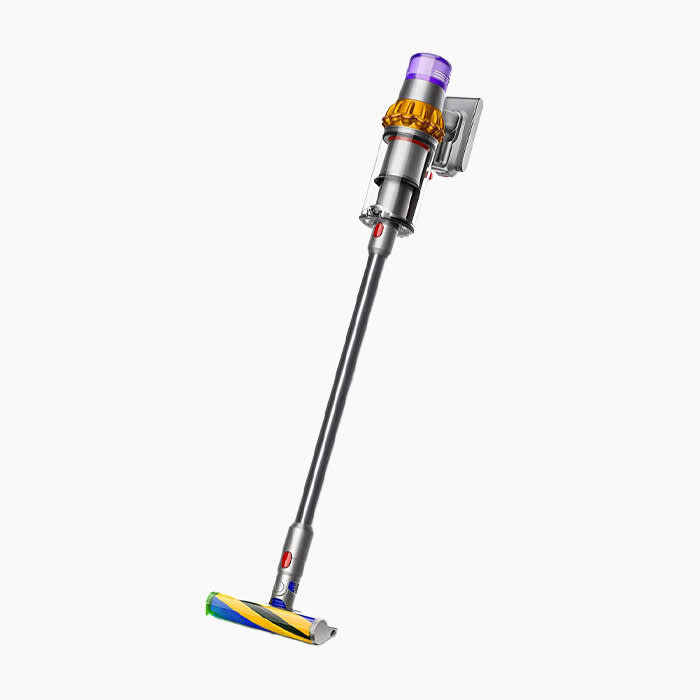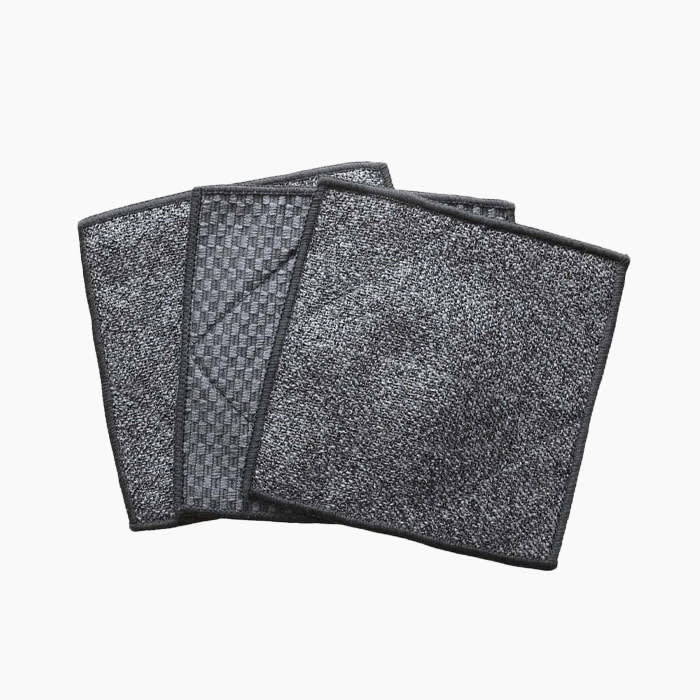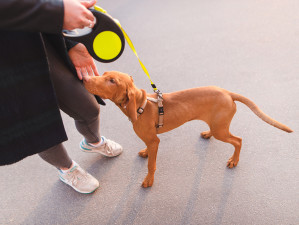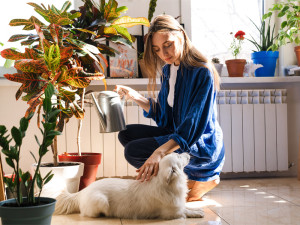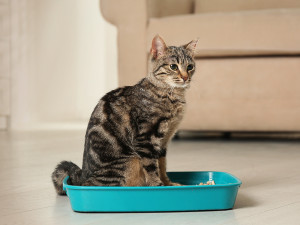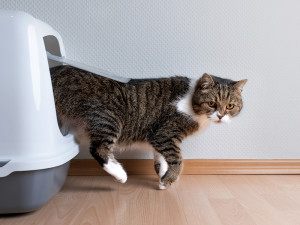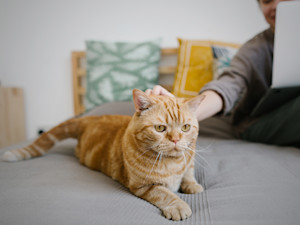How to Be a First Responder to Pet-Stain Emergencies
Experts say pet stains are 911 situations — here’s how to act fast.
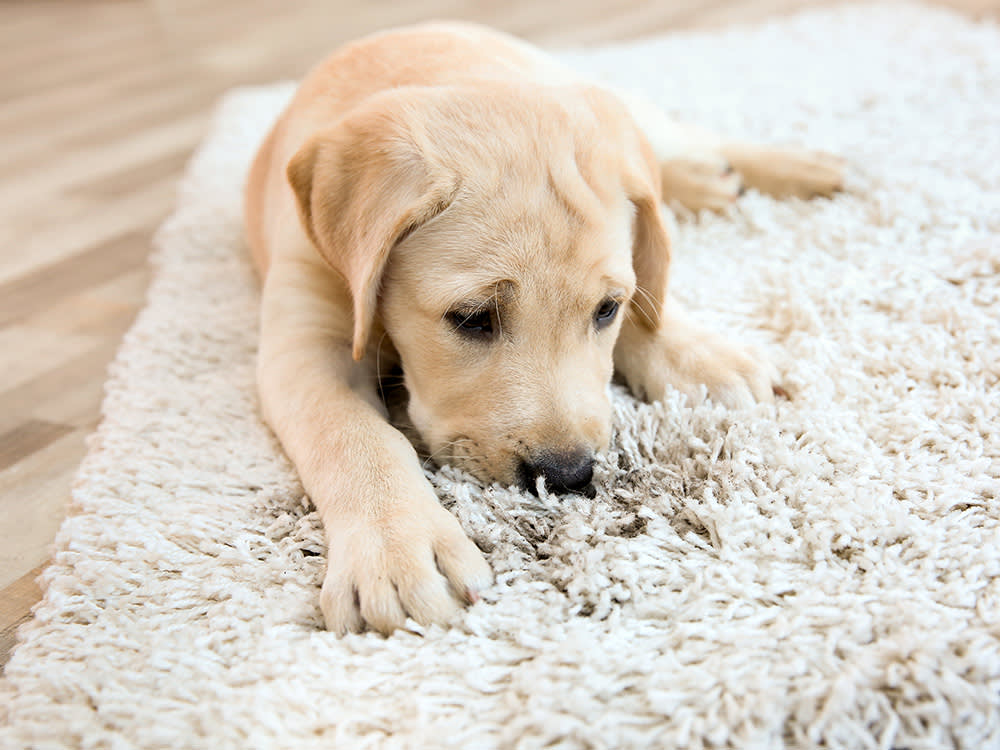
Share Article
Living with a pet means you get to come home to their smiling face — and sometimes, much less adorable surprises. Cleaning up messes comes with the territory of being a pet parent. But having the right strategies will make it a lot less laborious, leaving you with more time and energy to spend with your cat or pup. Here’s how professional cleaners and healthy living experts tackle every type of stain, stat.
Let’s start with the easy stuff: Paw prints and saliva.
When little paw prints from her Himalayan Siamese cat, Malee, linger on floors or hard surfaces, cleaning expert and author Melissa Makeropens in a new tab heads for the white vinegar. “When you think about paws, they’re similar to our feet. They have natural body oils and that’s what vinegar cuts through so well,” Maker tells Kinship.

littleKin™ is Kinship’s home just for puppy and kitten parents. Bop over to check out expert advice, new pet tools, and special deals—all curated for your newest family member.
opens in a new tabSimply mix equal parts water and vinegar, spray on the prints, and wipe up with a microfiber cloth. Maker has seen this DIY work wonders on pet drool, too.
One caveat, Loni Brownopens in a new tab, an eco-friendly and non-toxic living expert, notes, is that some pets loathe the smell of vinegar. If yours are averse to it, a mixture of castile soap and water (about a 1:10 ratio) works in a pinch.
What about other kinds of stains?
When you wake up or come home to a patch of vomit, pee, or poop, it’s time to spring into action. “I would treat a pet stain as a 911. It’s pretty urgent. The longer you allow a stain to sit, the more potential it has to seep in, grab hold of whatever fiber or material it’s on, and leave a lingering stain or odor,” Maker says.
As soon as Maker sees a mess, she’ll pick it up and completely remove it with a paper towel because most cleaning products need a dry surface to work on. It might take a few rounds of blotting until the paper towel comes up clean. From there, you can apply your product and let it sit for the amount of time it says on the label. While DIY cleaners have their time and place, experts agree that more advanced enzyme cleaners are what you’ll want here. They’re packed with beneficial bacteria that can break down the molecules in pee, poop, and beyond. The exact cleaner you choose will depend on your pet, but don’t worry: We’ve got ideas ready for you.
A note on soft surfaces like carpet and upholstery
If stains have made their way onto soft surfaces, you can use the same process above but be very careful about how much cleaner you apply. The more of it you put on, the more of it you’ll have to remove to completely lift the stain. Just use enough to cover the surface of the stain.
How to deal with dried stains
Get to a stain too late, only to find it’s dried? Natural cleaning expert Becky Rapinchukopens in a new tab recommends lightly dampening it first to soak up what you can with a paper towel, then moving onto your product. It might take a few rounds of dampening, so be patient.
One thing you want to avoid with dried stains is heat, Maker adds. “Since it’s a bio-based stain, heat can just set it more,” she notes.
What about fur?
When it comes to keeping fur from taking over a homeopens in a new tab, an ounce of prevention is worth a pound of cure. Frequent vacuuming and brushing is a must. “A brush that gets the undercoat is helpful for a dog that sheds a lot,” Rapinchuk adds.
And for those times that fur inevitably piles up on fabrics or carpets, Brown reaches for a green-cleaning staple: baking soda: “Not only does baking soda neutralize pet odors, it also neutralizes the static electrical charge, so the pet hair doesn’t stick as bad. I sprinkle the baking soda right on the carpet or upholstery and mix it around so it penetrates fabric fibers and let it sit for 20 minutes. Then, I use a good high-suction vacuum and voila...hair and odor gone!”
Don’t forget to collect what you wipe up! Pet fur is compostableopens in a new tab — and it can even be used in your garden opens in a new tab to deter pests.
Non-toxic & Pet-safe Products Experts Love
Ready for a new go-to cleaner? These are the pet-safe productsopens in a new tab that experts trust in their own homes.
Best for Tough Stains
Best Odor Eliminiator
Best Floor Cleaner
Best Sustainable Pick
Best for Hair
Best for Wiping

Emma Loewe
Emma is a writer, editor, and environmentalist based in New York City. She is the senior sustainability editor at mindbodygreen, the author of Return To Nature: The New Science of How Natural Landscapes Restore Us (April 2022), and the co-author of The Spirit Almanac: A Modern Guide To Ancient Self-Care. While she doesn’t have any pets of her own, she is a loving dog aunt to Pip the pup.
Related articles
![A puppy outside on a leash]() opens in a new tab
opens in a new tabHow to Potty Train a New Puppy
Tips you’ll want to pay attention to.
![eco-friendly pet parent pets down inside of indoor garden]() opens in a new tab
opens in a new tabHow to Be an Eco-Friendly Pet Parent
Reducing your paw print can seem daunting. Consider these simple tips.
![Cat sitting in a teal litter box]() opens in a new tab
opens in a new tabHow to Train a Cat to Use a Litter Box
If you do nothing else, teach your cat to poop in their litter box (not your shoe).
![cat coming out of litter box]() opens in a new tab
opens in a new tabWhat to Do When Your Cat Refuses to Be (Litter) Boxed In
An expert explains why kitties are so particular about where they pop a squat.
![Owner pets senior ginger cat.]() opens in a new tab
opens in a new tab6 Common Health Concerns in Senior Cats
How to spot and how to treat them.
![White Persian cat on a blue background]() opens in a new tab
opens in a new tabUTIs Suck for Your Cat, Too
Here’s how to help them get relief.
